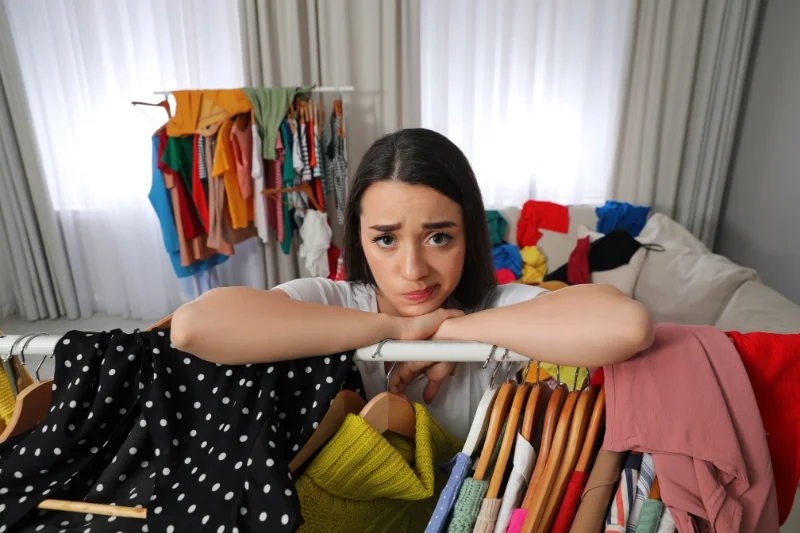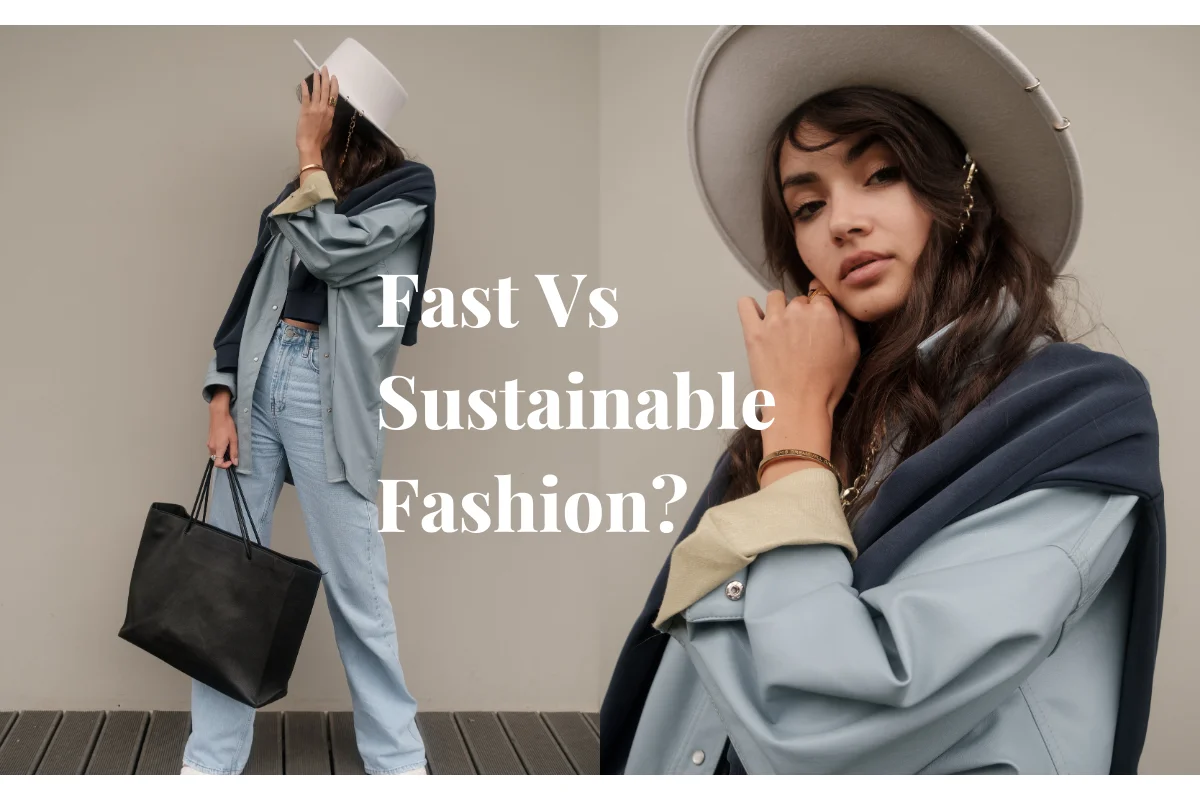Fashion is an ever-evolving industry that influences the way people dress, express themselves, and consume products. However, in recent years, there has been a growing awareness regarding the environmental and ethical impact of clothing production. This has led to the distinction between Fast Vs Sustainable Fashion But what is the difference between fast fashion and sustainable fashion? In this article, we will explore these two concepts, their advantages and disadvantages, and why making a conscious choice can have a lasting impact on the planet and society.
Understanding Fast Fashion

Fast fashion refers to the mass production of inexpensive clothing items that are designed to follow the latest trends. These garments are produced quickly and cheaply, allowing brands to update their collections frequently, sometimes as often as weekly. This rapid cycle of production and consumption is driven by consumer demand for new and trendy styles at low prices.
Characteristics of Fast Fashion:

- Low Cost: Fast fashion brands offer trendy clothes at extremely affordable prices, making fashion accessible to a wide audience.
- Rapid Production: Companies release new styles frequently, sometimes in a matter of weeks, to keep up with changing fashion trends.
- Poor Quality: Due to mass production and cost-cutting, fast fashion items are often made from low-quality materials and are not built to last.
- High Environmental Impact: The production of fast fashion involves excessive water usage, chemical dyes, and large amounts of textile waste.
- Exploitative Labor Practices: Many fast fashion brands manufacture their products in developing countries where labor is cheap, often under unethical working conditions.
Environmental and Ethical Concerns of Fast Fashion
The fast fashion industry is one of the leading contributors to pollution and climate change. From carbon emissions to water contamination, the industry has a significant impact on the environment. Additionally, fast fashion brands often rely on exploitative labor practices, including poor wages, unsafe working conditions, and child labor.
Understanding Sustainable Fashion
Sustainable fashion, also known as slow fashion, focuses on ethical production methods, environmentally friendly materials, and social responsibility. Unlike fast fashion, sustainable fashion aims to create clothing that minimizes environmental damage and promotes fair wages and working conditions.
Characteristics of Sustainable Fashion:
- Ethical Production: Sustainable fashion brands ensure that workers are paid fair wages and work in safe environments.
- Eco-Friendly Materials: These brands use organic cotton, hemp, bamboo, and recycled fabrics to reduce environmental harm.
- Durability: Sustainable fashion promotes quality over quantity, ensuring that clothing lasts longer.
- Waste Reduction: Many brands embrace a circular economy by recycling old garments and reducing waste.
- Transparency: Ethical brands are open about their supply chains and production methods.
Environmental and Ethical Benefits of Sustainable Fashion
Sustainable fashion brands focus on reducing their carbon footprint, minimizing waste, and conserving resources. By choosing sustainable fashion, consumers contribute to fair wages, ethical working conditions, and a cleaner environment.
Key Differences Between Fast Fashion and Sustainable Fashion
| Feature | Fast Fashion | Sustainable Fashion |
| Production Speed | Rapid and continuous | Slower, mindful production |
| Material Quality | Low-quality synthetic fabrics | High-quality organic or recycled fabrics |
| Environmental Impact | High pollution, waste, and carbon footprint | Low environmental impact, sustainable practices |
| Cost | Low prices, but short lifespan | Higher prices, but durable quality |
| Labor Practices | Exploitative labor, unethical wages | Fair wages, ethical working conditions |
| Business Model | High-volume, trend-driven | Slow, conscious consumption |
Why Choose Sustainable Fashion Over Fast Fashion?
- Long-Term Savings: While sustainable fashion pieces may cost more initially, their durability ensures fewer purchases over time, saving money in the long run.
- Better for the Environment: Sustainable fashion reduces pollution, conserves water, and minimizes textile waste.
- Ethical Consumerism: Supporting brands that prioritize fair wages and ethical production promotes better working conditions worldwide.
- Unique and Timeless Styles: Sustainable fashion embraces timeless designs rather than short-lived trends, ensuring a more versatile wardrobe.
- Positive Social Impact: By choosing sustainable fashion, consumers help reduce labor exploitation and support ethical businesses.
How to Transition from Fast Fashion to Sustainable Fashion?
If you’re used to shopping fast fashion but want to make a change, here are some tips to transition into sustainable fashion:
1. Buy Less, Choose Wisely
Instead of buying multiple low-quality pieces, invest in high-quality clothing that will last longer.
2. Shop from Sustainable Brands
Research and support brands that focus on ethical production and eco-friendly materials.
3. Embrace Second-Hand Shopping
Thrift stores, vintage shops, and online resale platforms offer great alternatives to buying new clothes.
4. Care for Your Clothes
Proper washing, repairing, and storing of garments can extend their lifespan and reduce waste.
5. Avoid Impulse Buying
Before purchasing, ask yourself if you really need the item and whether it aligns with your sustainable values.
Conclusion
So, what is the difference between fast fashion and sustainable fashion? The answer lies in the production process, environmental impact, ethical considerations, and consumer habits. Fast fashion is designed for speed, low costs, and high turnover, often at the expense of the environment and workers’ rights. In contrast, sustainable fashion focuses on ethical sourcing, eco-friendly materials, and longevity.Choosing sustainable fashion over fast fashion is not just a trend; it is a movement towards a more responsible and conscious way of consuming clothing. By making informed decisions and supporting ethical brands, we can contribute to a better world—one garment at a time.
Are you ready to make the switch to sustainable fashion? Let’s shop Jhanvi Fashion online storea step towards a more ethical and eco-friendly wardrobe today!



